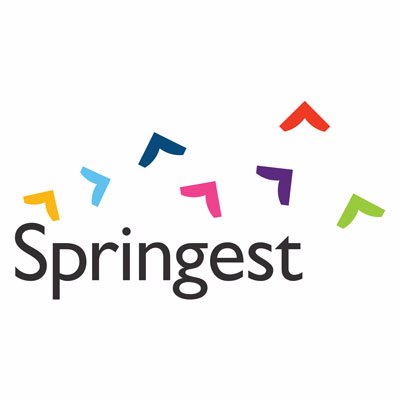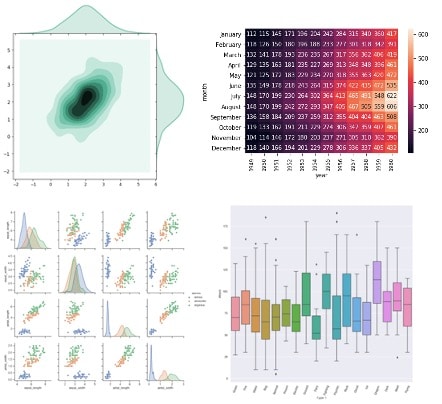Python for Data Analysis English
NRTO Quality Mark
| Startdatum | Einddatum | Locatie |
|---|---|---|
| 04-12-2025 | 05-12-2025 | Den Haag |
| 12-01-2026 | 13-01-2026 | Den Haag |
| 02-03-2026 | 03-03-2026 | Utrecht |
| 11-05-2026 | 12-05-2026 | Den Haag |
| 29-06-2026 | 30-06-2026 | Utrecht |
€995,- excl. btw

Python for Data Analysis
✔ Money Back Guarantee
✔ Free Cancellation
✔ Start Guarantee
★★★★★ 9.9 based on 53 experiences
Level: MBO/HBO/WO
Location: Den Haag
| Startdatum | Einddatum | Locatie |
|---|---|---|
| 04-12-2025 | 05-12-2025 | Den Haag |
| 12-01-2026 | 13-01-2026 | Den Haag |
| 02-03-2026 | 03-03-2026 | Utrecht |
| 11-05-2026 | 12-05-2026 | Den Haag |
| 29-06-2026 | 30-06-2026 | Utrecht |
Price: €995,-
Mail: farisch@schoolofdatascience.nl
Telephone number:
070 221 1586

Reviews


Course Information
Location: The Hague.
Duration: 2 days.
Study Load: 14 hours of course + 6 hours of self-study.
Class Times: 10:00 – 16:30.
Class Day: Variable.
Language: Dutch/English.
Level: MBO (Vocational)/HBO (University of Applied Sciences)/WO (Research University).
Price: €995,- excl. VAT.
Interested in organizing this course in-company for your team? Contact us here!
About the Python for Data Analysis Course
This basic Python course is your first step towards proficiency in data science! With Python, you learn one of the most sought-after skills in today’s data-driven economy. Our comprehensive training in Python programming enables you to leverage the power of Python for data analysis. Thus, you gain a solid foundation for further specialization in data science. The course covers essential programming concepts, tools, and techniques used in data analytics and data science. Additionally, the course is ideal for beginners aiming for a career in data analysis and data science.
During this hands-on course, you will gain experience with real data analysis projects. You will be guided by experienced instructors who will help you master the knowledge and skills. By the end of this course, you will not only have an in-depth understanding of Python for data science but will also be prepared to obtain a recognized Python Certification (PCEP), demonstrating your proficiency in the field and giving you an edge in the job market.
PCEP
Interested in obtaining the PCEP certificate after the course? Let us know! We will guide you with additional material towards achieving the PCEP certificate.
Learning Objectives of the Python for Data Analysis Course
- You will know the basics of Python including variables, data types, operators, interactions, lists, functions, conditions, loops, and importing libraries, and you can apply these concepts to solve algorithmic problems.
- You will be familiar with the environments in which Python can be used, and understand how Python compares to other programming languages, including the advantages and disadvantages of Python.
- You can import, create, and work with functions in Python, including using standard functions and importing libraries for specific functionalities.
- You can effectively work with different data types in Python.
- You can use Python to apply arithmetic, logical, and relational operators for manipulating data and solving problems.
- You can work with control structures such as if/elif/else for condition handling, and for and while loops for iterative tasks.
- You can import and analyze data in a Jupyter Notebook, using the Pandas library to create and manipulate DataFrames, group data, and handle missing data.
- You can apply data visualization techniques with Matplotlib, including creating basic plots and plotting data from Pandas.
- You can prepare for and successfully complete a Python Certificate (PCEP) or Python Certification exam, to demonstrate your proficiency in Python programming and data analysis.
Who is the Python for Data Analysis Course For?
This course is suitable for:- Beginners who want to learn to work with Python and get an introduction to data analysis with Python.
- Individuals who are new to programming and want to build a solid foundation in Python with a focus on data analysis.
- Professionals who have experience in other programming languages but want to expand their skills to Python for data analysis and data science.
- Data analysts and business intelligence professionals who want to upgrade their current skills by learning Python and its application in data analysis.
- Students and academics who want to learn Python for data analysis to support their research projects.
- Market researchers who want to gain better insights into consumer behavior and market trends through data analysis with Python.
- IT and technology professionals considering a career switch to roles focused on data analysis and data science.
- Organizations that want to train their teams in Python and data analysis to promote data-driven decision-making.
- Individuals aiming for certification in Python to strengthen their professional profile and enhance their career opportunities.


Python for Data Analysis Course Content
Day 1: Python Essentials
On this day, you will learn all the basics of Python: from defining variables to creating functions. This part has the same content as the Python Essentials course.General Introduction to Python
- Environments: Different environments in which Python can be used, such as data analysis, web development, automation, etc.
- Comparison to Other Languages: How Python compares to other programming languages in terms of speed, community support, libraries, etc.
- Pros and Cons: The advantages of using Python such as simplicity, versatility, and the disadvantages such as performance compared to languages like C or Java.
Variables and Data Types
- Data Types: An overview of the basic data types in Python – Boolean, integer, float, string, list, tuple, and dictionary.
- Working with Data Types: How to manipulate and convert different data types for various needs.
Operators
- Arithmetic Operators: Use of arithmetic operators for basic mathematical operations.
- Logical Operators: Use of logical operators for conditional logic.
- Relational Operators: Use of relational operators for comparisons.
Interaction
- Input and Output: Getting input from users and printing output to the console.
- Type Conversion: Converting one datatype to another.
Lists
- List Slicing: Selecting specific parts of a list.
- List Methods: Use of methods to manipulate lists.
Functions
- Python Standard Functions: Overview of the built-in functions in Python.
- Importing Functions: Importing functions from external libraries.
Conditions
- If/elif/else: These statements are used to perform different actions based on different conditions.
- Error Handling: The process of catching and responding to exception conditions that may occur during the execution of the program.
Loops
- For Loop: A control structure for repeating a block of code for a set number of iterations.
- While Loop: A control structure for repeating a block of code as long as a certain condition is true.
Importing Libraries
- Random Functions: Functions within libraries that are used to generate random numbers or to perform operations in a random manner.
- Working with Libraries: The process of importing, using, and managing external libraries to add additional functionality to a Python program.
Creating Functions
- Solving Algorithmic Problem Pieces: The process of defining, writing, and using functions to solve specific algorithmic problems.
Day 2: Python Data Analysis
On this day, you’ll dive into importing and analyzing data in a Jupyter Notebook.Pandas
- Dataframes Methods, Slicing, and Filtering: Working with dataframes to organize, manipulate, and analyze data.
- Descriptive Functions: Functions used to generate statistical summaries and other descriptive statistics of data.
- Grouping Data: Organizing data into groups to perform aggregated analyses.
- Handling Missing Data: Techniques for identifying, removing, or imputing missing values in datasets.
Visualization
- Basic Matplotlib Plots and Plotting from Pandas: Creating visual representations of data using basic plot functions and plotting dataframes with pandas.
Additional Information About the Course
- You will need your own laptop to participate in this course. You can download the Anaconda software for free in advance via this link.
- Lunch will be provided during the course. Do you have any dietary preferences? Let us know! We will arrange for a customized lunch.
FAQ
Python is one of the most widely used programming languages with a very large active community that contributes to making the language larger and stronger on a daily basis. The language is the most used language in the world of Data Science, Artificial Intelligence, image processing, scientific research, and simulations. It is also one of the most used languages at major companies such as Google, Amazon, and Instagram.
Yes, definitely! During the first day, you will learn all the basics of Python: from defining variables to creating functions. This part has the same content as the Python Essentials course.
However, it often helps to have some background knowledge. This could be domain knowledge, knowledge of statistics and/or mathematics, knowledge in another programming language, or knowledge of Excel.
Approximately 40% of our students fall into the ‘beginner’ category. This means that they have little to no knowledge of the aforementioned background knowledge. All of these students have experienced the data science training as positive or very positive.
No prior knowledge is required for the Python for Data Analysis course.
You can receive a ‘Certificate of Participation’ from the School of Data Science upon request after the course. It will include your name, the date, the course name, and the number of hours spent on the course.
The material covered in the Python Essentials course largely overlaps with the prerequisite knowledge required for the ‘PCEP – Certified Entry-Level Python Programmer’ certificate. If you would like to obtain that certificate, please indicate it on the registration form or during the course. The trainer will then assist you further with the certification process.